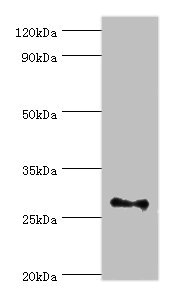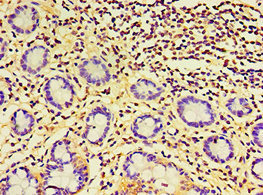Full Product Name
Rabbit anti-Homo sapiens (Human) FGF13 Polyclonal antibody
Alternative Names
FGF 13 antibody; FGF 2 antibody; FGF-13 antibody; FGF13 antibody; FGF13_HUMAN antibody; FGF2 antibody; FHF 2 antibody; FHF-2 antibody; FHF2 antibody; Fibroblast growth factor 13 antibody; Fibroblast growth factor homologous factor 2 antibody; OTTHUMP00000024143 antibody; OTTHUMP00000024144 antibody
Species Reactivity
Human, Rat
Immunogen
Recombinant Human Fibroblast growth factor 13 protein (1-245AA)
Immunogen Species
Homo sapiens (Human)
Purification Method
Antigen Affinity Purified
Concentration
It differs from different batches. Please contact us to confirm it.
Buffer
PBS with 0.02% sodium azide, 50% glycerol, pH7.3.
Tested Applications
ELISA, WB, IHC
Recommended Dilution
| Application |
Recommended Dilution |
| WB |
1:200-1:1000 |
| IHC |
1:20-1:200 |
Storage
Upon receipt, store at -20°C or -80°C. Avoid repeated freeze.
Lead Time
Basically, we can dispatch the products out in 1-3 working days after receiving your orders. Delivery time maybe differs from different purchasing way or location, please kindly consult your local distributors for specific delivery time.
Usage
For Research Use Only. Not for use in diagnostic or therapeutic procedures.







